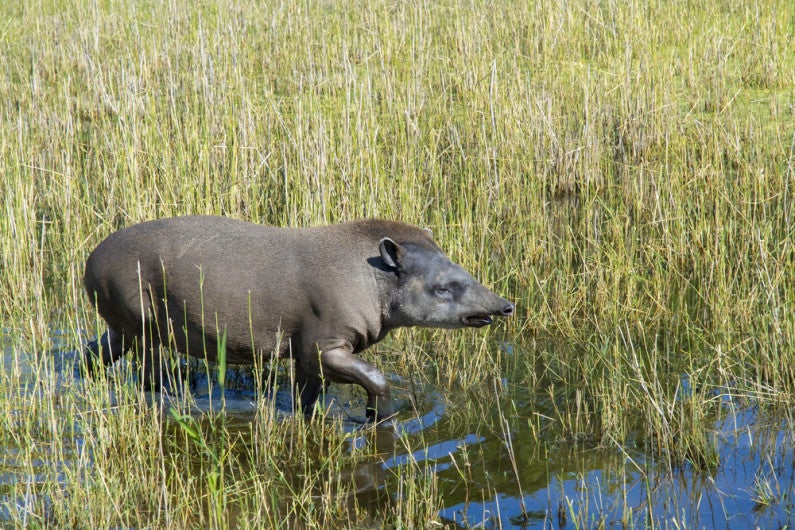The Amazon rainforest may be home to more animals than previously thought, Stanford scientists show
By tapping the expertise of indigenous hunters, researchers found that conventional surveying techniques underestimate animal populations and miss species in the remote Amazon. Producing an accurate count is important for planning conservation efforts.
The Amazon rainforest has long been known for being an exotic place in the world, full of lush vegetation and diverse wildlife – perhaps even more than we previously thought. A new study led by Stanford scientists shows that tapping the expertise of indigenous hunters can provide more accurate animal counts than modern sampling techniques.
Estimating the number of animals in an ecosystem has been a relatively straightforward effort: Simply count which animals you see as you walk through a measured-off zone in the forest. Recently, the practice has expanded to include motion-triggered cameras to record animals as they walk by, together painting a picture of how many animals live in an area.
There are limitations to this approach, however, said Jose Fragoso, a biologist at Stanford and lead author on the new study. Animals often sense and avoid even the stealthiest human observers, and camera systems break down or are so expensive that a limited number can be deployed at a time.

The tapir is a culturally important animal in many Amazonian societies. A method of estimating animal populations by the signs they leave behind, including feces and hair, shows that tapirs are present at many sites where they were never spotted visually. (Image credit: Shutterstock)
In the remote areas of the forest in southern Guyana, however, Fragoso has experienced success using a technique called the “sign method.” This estimates animal populations through indirect evidence of animals, such as footprints, feces, hair, burrows and so forth. Animals cannot inhabit an area without leaving their mark, he said, and trained local people can easily detect these marks.
For three years, the researchers applied both the sighting count and sign methods to more than 200 2.5-mile-long trails within the forest in southern Guyana. Data collectors – indigenous hunters skilled in tracking and trained by the researchers in sampling methodologies – walked more than 27,000 miles during this period. The results were surprisingly different.
The six most important game animals in the region – including species of deer and pig-like peccaries and tapirs – were not encountered in up to 40 percent of the villages or control sites, or on 29 to 72 percent of the trails where they were detected by sign. The sign method found that tapirs, one of the most culturally important animals and which are sensitive to overhunting, were present at many sites where they were never spotted visually.
“We were very surprised that so many animals, and in one case a whole species, were undetected using the visual sighting method,” Fragoso said. “This discovery questions the validity of so many past studies that reported that rural people through overhunting were gravely reducing or extirpating species throughout tropical forests.”
Sign surveys might be the most efficient method for management-oriented studies conducted in large, remote areas, and particularly those focused on community-based wildlife management.
Even though the researchers found that in areas of the Amazon animal populations are healthier than previously believed, this does not mean that overhunting is not a problem, Fragoso said. In this study, people hunted only for their personal food needs. But areas experiencing commercial hunting – for instance, many regions in Africa and Asia – have seen serious population declines and, in some cases, localized species extinction. For instance, elephants and rhinos might soon become extinct due to commercial hunting.
Fragoso hopes to prevent similar declines in remote areas such as the Amazon, and good counts of animals are the key.
“Having an accurate count of animals allows us to set appropriate hunting levels and this increases the likelihood of achieving sustainability in the system,” Fragoso said. “This gives governments and institutions that govern human resource use more options for conserving land and protecting animal species.”
The study, titled “Line Transect Surveys Underdetect Terrestrial Mammals: Implications for the Sustainability of Subsistence Hunting,” was published in the journal PLOS One. Co-authors included Taal Levi of the Department of Fisheries and Wildlife, Oregon State University; Luiz Oliveira of Museu Nacional in Brazil; Jeffrey Luzar of Stanford; Han Overman of the State University of New York, Syracuse; Jane Read of Syracuse University; and Kirsten Silvius of Virginia Tech.
